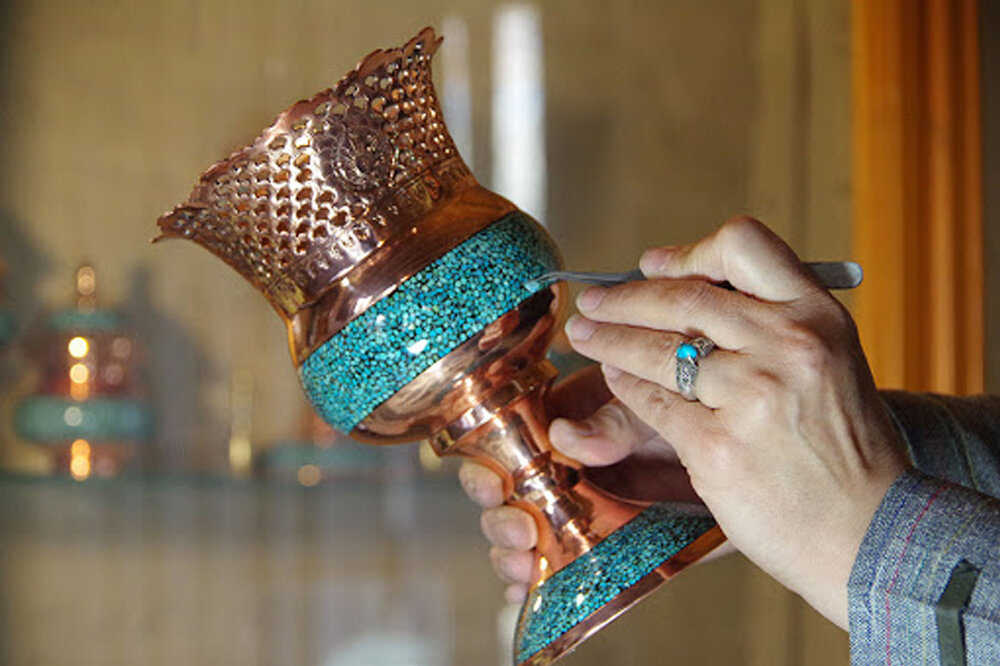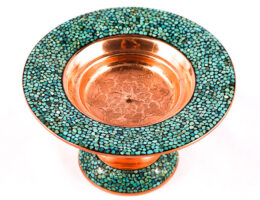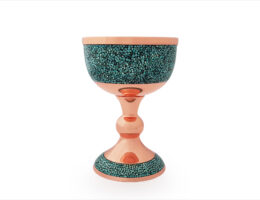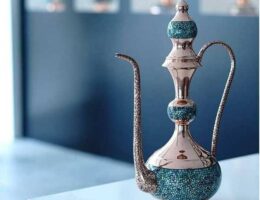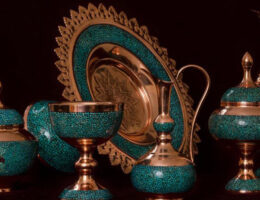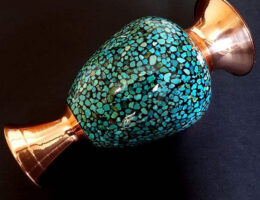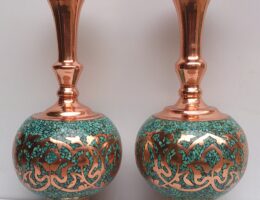IRAN ART EXHIBITION: YOU CAN NOT IGNORE FIROUZE KOOBI AS A WONDERFUL SOUVENIR
Souvenirs can make memories of a travel in a way that every time you catch a glimpse of your souvenirs you will be surrounded by a flow of remembrance from the travel time. Souvenirs act like photos and even memorial notebooks that connect your present time with a sweet past. Have you ever thought what to buy in Iran as souvenirs? So, if you are the kind who looks for buying souvenirs in Iran during your travel, follow us to get familiar with the best Iran souvenirs that you cannot find in any other parts of the world.
As a historical country with a rich cultural and artistry heritage inherited from its early inhabitants, Iran has been famous for flourishing gifted artists who have been used to create unique works of art. The moment you visit Iran traditional bazaars, you will be amazed by what you see; from the almost disappearing yet creative handicrafts which attempt to survive in the middle of modern hustle and bustle of art markets to the traditional artists who are the creators of these handmade artworks will catch your eyes. Next to these wonderful handicrafts as Iran souvenirs, in different cities in Iran, especially Isfahan, Shiraz, Tabriz and Kerman you will probably end up in nut shops or sweet shops where you will be affected by the smell and taste of Iranian nuts and sweets. You may find them good choices as souvenirs to keep them with you at home or to present them to your best friends and families.
Turquoise and Firouzeh koubi
Turquoise is one of the precious expensive ornamental stones among precious stones found only in certain parts of the world, including Iran. The city of Neyshabur in Northeastern Iran is not only famous for the wise Persian poet, Khayam, but it is also known for having the best turquoise stones in the world. The turquoise of the mines in Neyshabur are beautifully carved and used in various forms of jewelry. Turquoise are mostly found in Mashhad and Neyshabur but also other jewelry stores all over Iran. They can also be seen in the form of Firouzeh Koubi which is the art of embedding turquoise onto the copper vessels, making them a wonderful souvenirs for travelers. In order to distinguish Iranian turquoise from its American peer, you might pay attention to the rough and darks veins of Persian turquoise.

Turquoise inlaying
Turquoise inlaying is a type of handicraft which is created by putting small pieces of turquoise together in form of mosaic on surfaces of objects (plates, bowls, rose water sprinklers, cups, etc.) and ornaments. Metals such as copper, brass, silver and bronze are used. The more arranged pieces of turquoise are; the higher quality of turquoise inlaying product is. As a result, it has a higher price. Turquoise inlaying is more common in Isfahan. It is a new art. In Iran, it dates back to 70 years ago.
Turquoise inlaying is done through special stages. In general, turquoise inlaying is done in two stages:
Goldsmiting
Turquoise inlaying
Goldsmithing
IRAN ART EXHIBITION: In this step, first, a desired container is made with metals such as copper, brass, silver and bronze through specials processes. This work is done by goldsmith manually or by machine press. When container is made, a part of container is selected for turquoise inlaying. Then, it is soldered with a metal string. This work is done by inlayer with precision. If a part of turquoise inlaying is large, empty parts are filled with metal strings in form of tiny patterns and designs and then soldered. This work makes surface of turquoise inlay more beautiful and shinier.
Before turquoise inlaying, turquoise stone should be cut and grinded by grinder. Grinded turquoise has some dust and gravels. So, to inlay turquoise, grinded turquoise pieces are separated and cleaned. After that, container is heated. Then, special powder is sprinkled on the container and melted. Melted powders are sticky so that grinded turquoises are easily attached to the container. Turquoise pieces should be put together in a way that some spaces are created between them. To fill these spaces, a powder is poured on them and then, they are heated. When powders melt, tiny stones are poured in the spaces to fill them. Then, they are pressed to stick together well. In final stage, turquoise product is polished.
